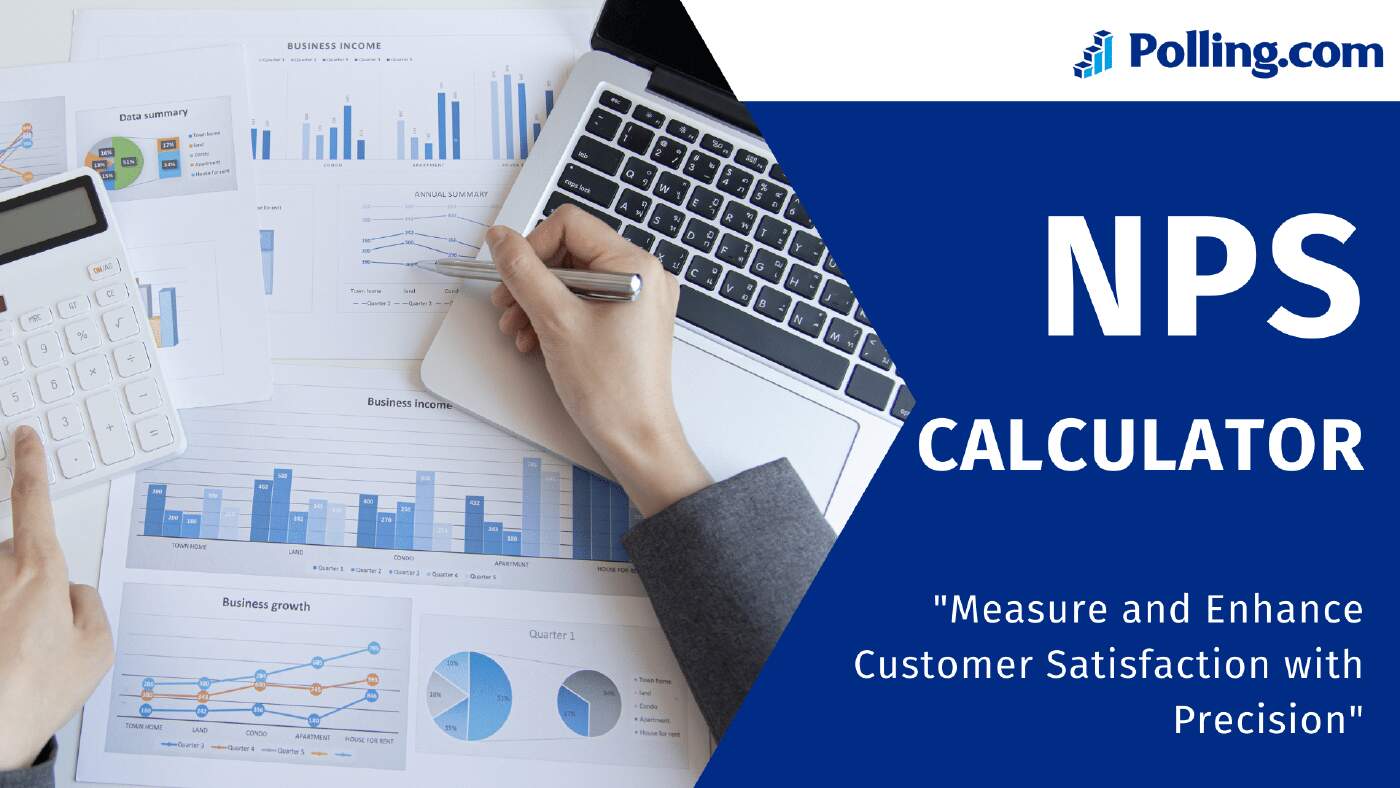
NPS Calculator: Turning Feedback into Insights
How do businesses gauge the loyalty of their customers and understand their satisfaction levels? One effective method is through the Net Promoter Score (NPS).
This powerful metric offers insights into customer loyalty and satisfaction, allowing companies to make data-driven decisions. But calculating NPS manually can be time-consuming and prone to errors. This is where an NPS calculator becomes invaluable.
In this article, we’ll delve into the concept of NPS, its significance for businesses, and how an NPS calculator can transform raw customer feedback into actionable insights.
Understanding Net Promoter Score (NPS)

What is NPS?
The Net Promoter Score (NPS) is a metric that quantifies customer loyalty and satisfaction. It was developed by Fred Reichheld, Bain & Company, and Satmetrix in 2003.
NPS is calculated based on responses to a single question: “On a scale of 0 to 10, how likely are you to recommend our product/service to a friend or colleague?”
Respondents are categorized into three groups based on their scores:
- Promoters (9-10): These are enthusiastic customers who are likely to recommend the company and drive growth.
- Passives (7-8): These customers are satisfied but not overly enthusiastic. They are vulnerable to competitive offerings.
- Detractors (0-6): These are unhappy customers who can damage your brand through negative word-of-mouth.
The Importance of NPS
NPS is crucial for businesses as it provides a clear metric for understanding customer loyalty. A high NPS indicates strong customer satisfaction and loyalty, which are key drivers of business growth and retention.
Companies with high NPS scores typically experience lower churn rates and higher revenue growth.
How the NPS Calculator Works
The NPS is calculated by subtracting the percentage of Detractors from the percentage of Promoters. This score can range from -100 (if every customer is a Detractor) to 100 (if every customer is a Promoter). A positive score or a score closer to 100 is indicative of greater customer satisfaction and loyalty.
Now, with our interactive NPS calculator below, you can easily determine your company’s NPS. Simply input the number of Promoters, Passives, and Detractors, and the calculator will do the rest. This tool is designed for anyone—whether you are a business owner, a market researcher, or just curious about calculating NPS—to gain insights into customer loyalty and make informed decisions based on that data.
Net Promoter Score (NPS)
NPS Result: –
Step-by-Step Guide to Using the NPS Calculator
Using an NPS calculator is straightforward. Here’s a step-by-step guide:
- Collect Responses: Gather customer responses to the NPS question.
- Categorize Responses: Sort the responses into promoters, passives, and detractors.
- Calculate Percentages: Determine the percentage of total responses for each category.
- Apply the Formula: NPS is calculated using the formula: NPS = % of Promoters – % of Detractors.
- Interpret the Score: The resulting score will range from -100 to +100. A positive score indicates more promoters than detractors.
Importance of Accurate Data Entry
Accurate data entry is critical for precise NPS calculation. Errors in categorizing responses or calculating percentages can lead to incorrect NPS, which can misinform your business decisions.
Examples of NPS Calculation
Let’s illustrate with an example:
- Total responses: 100
- Promoters: 60
- Passives: 20
- Detractors: 20
Calculate percentages:
- Promoters: (60/100) * 100 = 60%
- Detractors: (20/100) * 100 = 20%
Apply the NPS formula:
- NPS = 60% – 20% = 40
This NPS score of 40 indicates a strong base of loyal customers.
Benefits of Using an NPS Calculator

Time Efficiency and Accuracy
An NPS calculator saves time and ensures accuracy. Manual calculations can be tedious and prone to mistakes, especially with large datasets. An automated calculator simplifies this process, providing quick and precise results.
Role in Continuous Feedback Loops
NPS calculators play a vital role in continuous feedback loops. Regularly measuring NPS helps businesses track changes in customer satisfaction over time, identify trends, and implement timely improvements.
Benchmarking Against Competitors
Using NPS calculators, businesses can benchmark their scores against industry standards or competitors. This benchmarking helps in setting realistic goals and identifying areas for improvement.
Strategies for Improving Your NPS
Interpreting NPS Results
To derive actionable insights from NPS results, analyze the feedback from promoters, passives, and detractors:
- Promoters: Understand what they love about your product/service and reinforce these strengths.
- Passives: Identify what prevents them from becoming promoters and address those issues.
- Detractors: Focus on resolving their pain points to convert them into promoters.
Converting Passives and Detractors into Promoters
Here are strategies to improve your NPS by converting passives and detractors into promoters:
- Enhance Customer Experience: Continuously improve your product/service based on feedback.
- Engage with Customers: Regular communication and personalized experiences can foster loyalty.
- Address Issues Promptly: Quick resolution of complaints can turn detractors into promoters.
Importance of Follow-Up Actions
Follow-up actions are essential for improving NPS. Respond to feedback promptly, implement necessary changes, and inform customers about the improvements made. This shows that you value their input and are committed to enhancing their experience.
Integrating NPS Calculators into Business Operations

Best Practices for Measuring NPS
Regular measurement of NPS is crucial. Here are some best practices:
- Consistent Timing: Measure NPS at regular intervals (monthly, quarterly) to track trends.
- Targeted Surveys: Send surveys to relevant customer segments to get specific insights.
- Actionable Reports: Generate detailed reports to understand NPS drivers and barriers.
Tools and Software with Integrated NPS Calculators
Several tools and software offer integrated NPS calculators, making it easy to measure and analyze NPS:
- SurveyMonkey: Offers customizable NPS surveys and automated calculations.
- Qualtrics: Provides advanced analytics and real-time NPS tracking.
- HubSpot: Integrates NPS surveys with CRM for comprehensive customer insights.
Conclusion
NPS is a valuable metric for understanding customer loyalty and satisfaction. An NPS calculator simplifies the process of calculating and interpreting this score, providing actionable insights for businesses.
By regularly measuring NPS and acting on feedback, companies can foster customer loyalty and drive business growth. Embrace NPS calculation as a regular part of your customer feedback analysis to stay ahead in a competitive market and continuously improve your customer experience.
